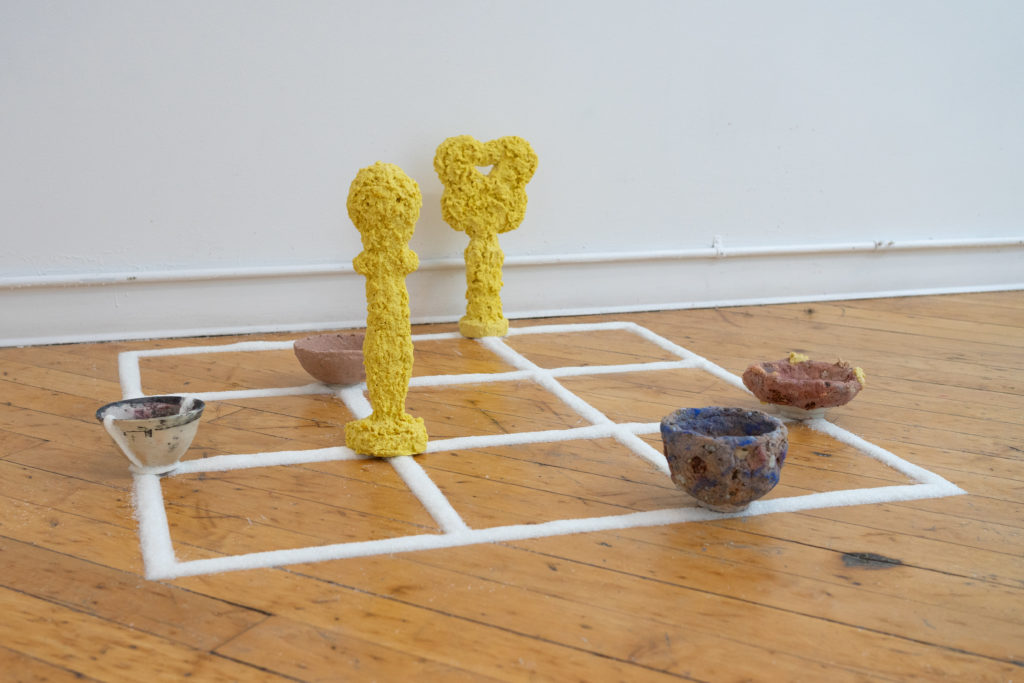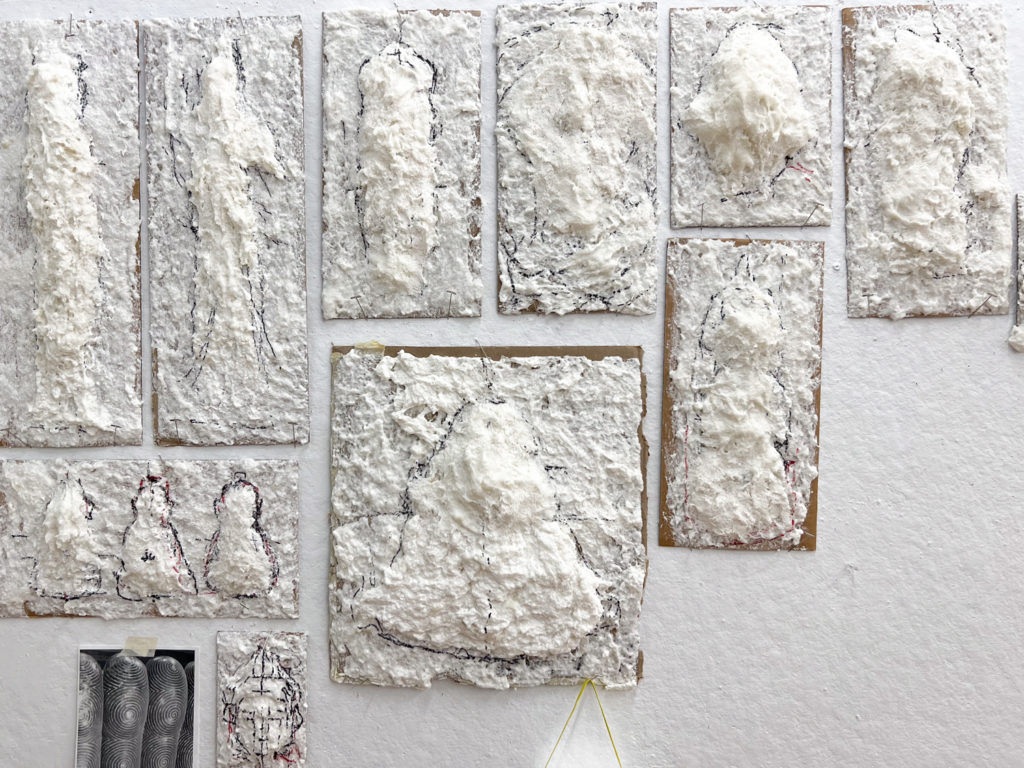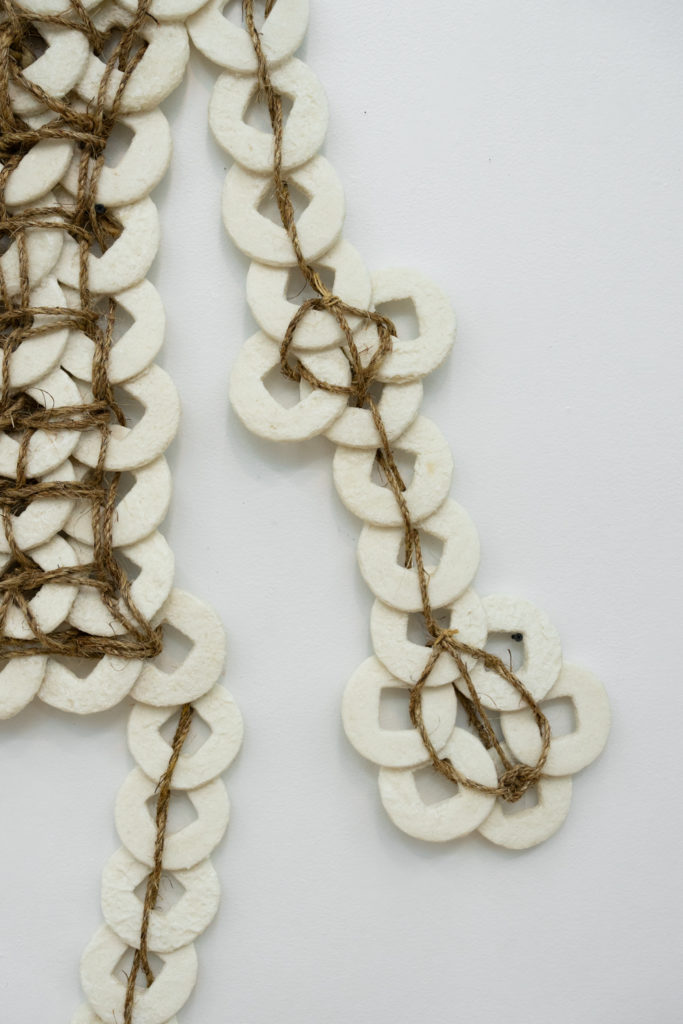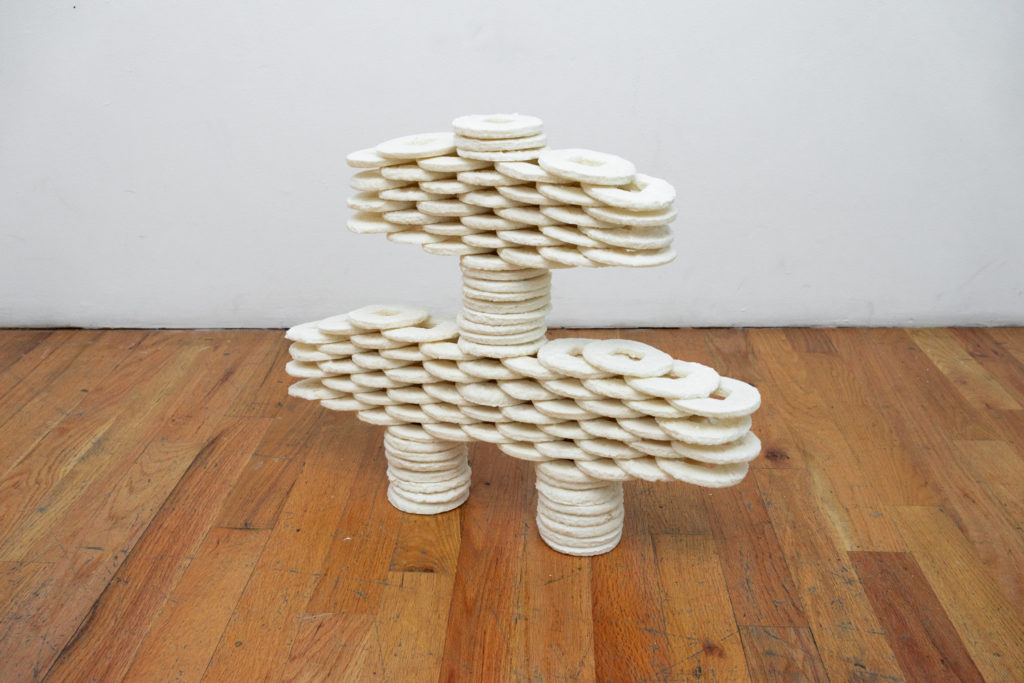AIR 15 Feature: Jimmy Zhao
Sahana Srinivasan, Artist Programs intern at TAC, got together with current AIR 15 resident Jimmy Zhao: Jimmy Zhao is an interdisciplinary artist based in Brooklyn. He recently completed his Bachelor's in Fine Art from the Rhode Island School of Design. His work has been exhibited at the O'Flaherty Gallery in New York, NY, RISD Museum in Providence, RI, and Clare Gallery in Hartford, CT. Jimmy was awarded the Sandy Chase Scholarship for emerging young artists and was a past Artist-in-Resident at Oxbow.

"The recipe refers to my parents’ working class background, in relation to Chinese takeout and the immigrant experience to form a technology. When I think of my work, I’m extending this history into an aesthetic field. Working in this mode of recipe, there’s also this investigation of the hand and body being a site of knowledge. I would say there’s a constant feeling of embodiment in this practice."
Sahana: How are you doing today?
Jimmy: Pretty good, I feel like I’m cranking out a lot of my work right about now.
S: And what is manifesting in the work you’re trying to do right now?
J: I think my practice has been in a conceptual state, so leaving the Play period has allowed me to commit to the idea and solidify the making process. I’m forced to look at the finished piece because of this.
S: Can you tell me more about your relationship and the general context of finishing a piece for you?
J: My work feels like a constant play, because I’m working with materials and forming recipes that don’t necessarily have a concrete function, because I’m interested in compositing what it’s like to develop a relation between these materials. So there’s always a state of interrogation with the place of the recipe. And the forms that I make from the recipe have more of a traditional sense of being finished, and the legibility of the forms determines whether they are finished. I think there’s an interest in display in order to contextualize the work, because that opens up new conversations surrounding how the body of work is viewed in a space.
S: I think zoning in on the recipe and where that comes from, could you dive deeper into that side of your making process?
J: The recipe refers to my parents’ working class background, in relation to Chinese takeout and the immigrant experience to form a technology. When I think of my work, I’m extending this history into an aesthetic field. Working in this mode of recipe, there’s also this investigation of the hand and body being a site of knowledge. I would say there’s a constant feeling of embodiment in this practice.

S: We’ve talked about this earlier, as the recipe being this site of the original as well, and as you mention this process to be really embodied, I’m wondering what the dynamic is like between both?
J: Even at the origins of this body of work, I was constantly questioning what is authentic versus what is synthetic. The material I’m working with is the lab made version of MSG, so that being a key component in my recipe, coupled with the ways of my practice borrowing from certain textile and ceramic traditions only really continues this question on the original.
S: You bring up traditions and borrowing of traditions, so I’m wondering how that has a greater impact in the way you view your making.
J: I think the recipe itself borrows from culinary traditions, and so as I’m here, I’m trying to make sense of the history that comes with my work. I mentioned textile traditions and ceramic traditions as well, which connect with the way I use natural dyes in my work or the way I shape my forms. These are all methodologies that have been cultivated for so long, and so I’m also trying to explore other craft mediums to understand that relationship in my work.
S: You mention the importance of history, so do you have a certain research process that coincides with the work?
J: I have a complicated relationship with research, where there are times that I’m really in the books and there are times where I’m hands on. I find the hands-on process of research to really come from the residency, where I’m learning techniques that don’t entirely coincide with the direct looks and aesthetics of my work, but create subconscious linkages with my practice. I feel like weaving is an example, where it’s so methodical and takes a lot of time to map out before the actual process, and the material I’m working with is similar, in that I’m forced to slow down and realize the level of preparation that goes into it.
S: I guess that brings me to what you’re currently working on.
J: Yeah, I was drawn to this reference of a Balinese mortuary figure that was from a lecture with Urmila Mohan at TAC. The exchange of goods between cultures really stood out to me, coupled with the kitsch charm that I see in Chinatown really informed this piece.

S: And how is it going?
J: A lot more time consuming than I thought, because of how long it takes to shape each form 200 times, and also understanding the limitations I have when working with my hand and sandpaper. There’s also the aspect of adding ornamentation for the objects at such a register, because I’m not intending for this to be a minimalist piece. I think that’s one of the surprises from taking on an ambitious project, and having a support system through the residency helps me map out the process.
S: Can you touch more on the fact that you’re not intending for this piece to be minimalist?
J: I find that I associate simplification with the act of erasure, and so that aesthetic creates a violent association. This applies contemporary mode that art is displayed, and also works around the way of relating my work back to the community spaces it first started in. As I finish more of this body of work, that’s something I want to further question and develop. It’s also important to me to specify the connections to material history and show how deep the investigation runs.
S: There is a clear sense of repetition in your process with this project. How do you think that informs the way you feel about this process and also how would it play out in future projects?
J: Throughout this process, I feel like I'm constantly fighting my background of painting. The process of painting is far more cerebral and mimetic, and there’s less of a gravitational or a spatial consideration. I think I’m forced to reconsider where I place my emphasis when crafting my piece, so I end up with certain possibilities that I haven’t approached before.
S: Have you thought about modes of display with this piece?
J: I’m considering it as a hanging piece, because I find it to be more like an object akin to painting, as well as signaling back to the kitsch Chinatown charms.
S: As we near the end of our conversation, I wanted to ask about your relationship with documenting your work. What does documentation provide in terms of realizing your work?
J: I’m thinking about both what it means to document my work, but also the effect of not documenting my work. There is the side of creating an archive, and solidifying my practice in a digital sense. But I’m curious about other ways of documentation to provide more context, both for myself and the viewer. I think that kind of documentation would focus more on the recipe development and tie together all sides of the work.
S: So that leaves us with what you’re looking forward to…
J: I’m interested in using the space to make spatial constellations for the final show, and I look forward to discussing and working that all out.
